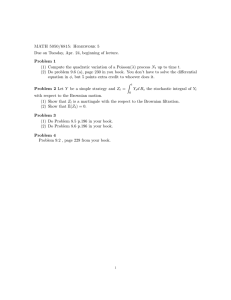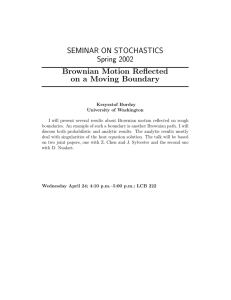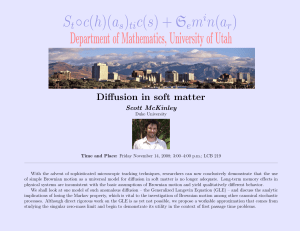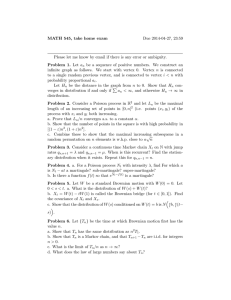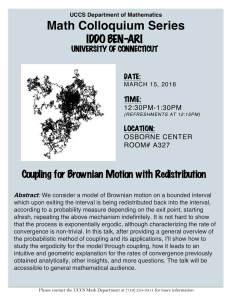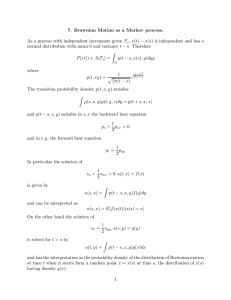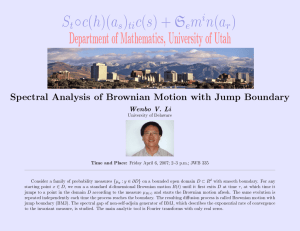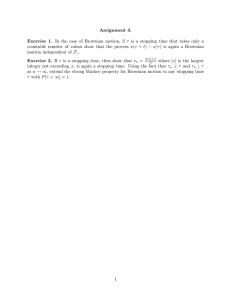DETECTION BY POISSON BROWNIAN MOTIONS and let each point
advertisement
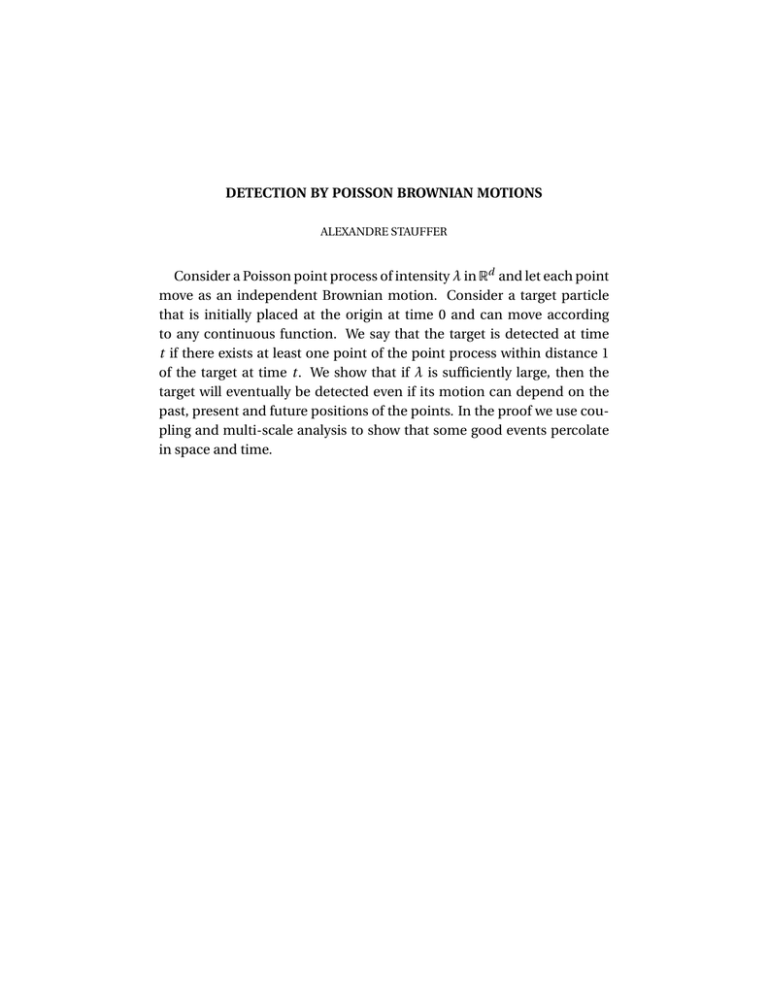
DETECTION BY POISSON BROWNIAN MOTIONS ALEXANDRE STAUFFER Consider a Poisson point process of intensity λ in Rd and let each point move as an independent Brownian motion. Consider a target particle that is initially placed at the origin at time 0 and can move according to any continuous function. We say that the target is detected at time t if there exists at least one point of the point process within distance 1 of the target at time t . We show that if λ is sufficiently large, then the target will eventually be detected even if its motion can depend on the past, present and future positions of the points. In the proof we use coupling and multi-scale analysis to show that some good events percolate in space and time.
